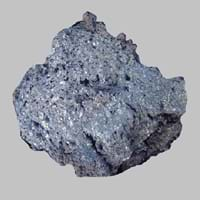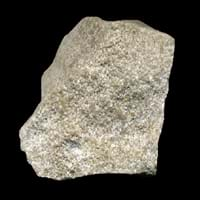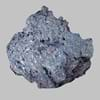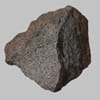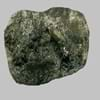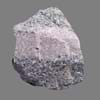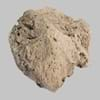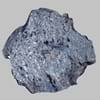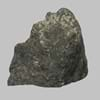Definition
Picrite is a variety of high-magnesium olivine basalt that is very rich in the mineral olivine
Oolite is a sedimentary rock formed from ooids, spherical grains which are composed of concentric layers of calcite
Origin
Hawaii Islands
Unknown
Discoverer
Unknown
Unknown
Etymology
From Greek pikros bitter + -ite, 19th century
From oo- + -lite, after German Oolit. A rock consisting of fine grains of carbonate of lime
Class
Igneous Rocks
Sedimentary Rocks
Sub-Class
Durable Rock, Hard Rock
Durable Rock, Medium Hardness Rock
Other Categories
Fine Grained Rock, Opaque Rock
Fine Grained Rock, Opaque Rock
Texture
Earthy, Rough
Clastic or Non-Clastic
Color
Black, Brown, Colourless, Green, Grey, Pink, White, Yellow
Black, Blue, Brown, Cream, Green, Grey, Pink, Red, Silver, White, Yellow
Durability
Durable
Durable
Scratch Resistant
Yes
Yes
Appearance
Rough and Shiny
Rounded and Rough
Interior Uses
Countertops, Decorative Aggregates, Homes, Interior Decoration
Decorative Aggregates, Flooring, Interior Decoration
Exterior Uses
As Building Stone, As Facing Stone, Garden Decoration, Paving Stone
As Building Stone, As Facing Stone, Garden Decoration, Paving Stone
Other Architectural Uses
Curbing
Not Yet Used
Construction Industry
As a Sintering Agent in Steel Industry to process Iron Ore, Cement Manufacture, for Road Aggregate, Manufacture of Magnesium and Dolomite Refractories, Roadstone, Used for flooring, stair treads, borders and window sills.
Cement Manufacture, Cobblestones, Landscaping
Medical Industry
Not Yet Used
Not Yet Used
Antiquity Uses
Artifacts, Monuments, Sculpture
Artifacts
Commercial Uses
As a Feed Additive for Livestock, As armour rock for sea walls, Metallurgical Flux, Pottery, Source of Magnesia (MgO)
Creating Artwork, Jewelry, Used in aquariums
Types
Oceanite
Not Available
Features
Host Rock for Lead
Available in lots of colors, Generally rough to touch, Very fine grained rock
Archaeological Significance
Monuments
Used
Not Yet Used
Famous Monuments
Data Not Available
Not Applicable
Sculpture
Used
Not Yet Used
Famous Sculptures
Data Not Available
Not Applicable
Pictographs
Not Used
Used
Petroglyphs
Not Used
Used
Figurines
Used
Not Yet Used
Formation
Picrite is a fine-grained, hard rock which is a type of metasomatite, essentially altered basalt. It forms with or without crystallization, either below the surface as intrusive rocks or on the surface as extrusive rocks.
Oolites form when layers of calcite are deposited around a sand grain or fossil piece and are rolled around in calm water, which makes them round.
Mineral Content
Biotite, Olivine, Plagioclase, Pyrrhotite
Calcite, Chert, Clay, Dolomite, Quartz, Sand, Silt
Compound Content
Al, CaO, Carbon Dioxide, Mg, MgO
Aluminium Oxide, Ca, NaCl, CaO, Iron(III) Oxide, FeO, MgO
Types of Metamorphism
Burial Metamorphism, Cataclastic Metamorphism, Impact Metamorphism, Regional Metamorphism
Not Applicable
Types of Weathering
Biological Weathering
Biological Weathering, Chemical Weathering, Mechanical Weathering
Types of Erosion
Chemical Erosion, Coastal Erosion, Glacier Erosion, Sea Erosion, Water Erosion, Wind Erosion
Chemical Erosion, Coastal Erosion
Grain Size
Fine Grained
Fine Grained
Fracture
Uneven
Conchoidal
Streak
White, Greenish White or Grey
White
Porosity
Less Porous
Less Porous
Luster
Subvitreous to Dull
Pearly to Shiny
Compressive Strength
Not Available
Cleavage
Imperfect
Non-Existent
Specific Gravity
2.75-2.92
Not Available
Transparency
Opaque
Opaque
Density
1.5-2.5 g/cm3
Not Available
Specific Heat Capacity
Not Available
Resistance
Heat Resistant
Heat Resistant, Wear Resistant
Deposits in Eastern Continents
Asia
India, Russia
Brunei, India, Indonesia, Malaysia, Singapore, Thailand, Vietnam
Africa
South Africa
Cameroon, Chad, Ghana, Kenya, Malawi, Sudan, Tanzania, Togo, Zambia, Zimbabwe
Europe
Iceland
United Kingdom
Others
Not Yet Found
Not Yet Found
Deposits in Western Continents
North America
Canada, USA
USA
South America
Brazil
Colombia
Deposits in Oceania Continent
Australia
Not Yet Found
Adelaide, New Zealand, Queensland, Tonga, Victoria, Yorke Peninsula
All about Picrite and Oolite Properties
Know all about Picrite and Oolite properties here. All properties of rocks are important as they define the type of rock and its application. Picrite belongs to Igneous Rocks while Oolite belongs to Sedimentary Rocks.Texture of Picrite is Earthy, Rough whereas that of Oolite is Clastic or Non-Clastic. Picrite appears Rough and Shiny and Oolite appears Rounded and Rough. The luster of Picrite is subvitreous to dull while that of Oolite is pearly to shiny. Picrite is available in black, brown, colourless, green, grey, pink, white, yellow colors whereas Oolite is available in black, blue, brown, cream, green, grey, pink, red, silver, white, yellow colors. The commercial uses of Picrite are as a feed additive for livestock, as armour rock for sea walls, metallurgical flux, pottery, source of magnesia (mgo) and that of Oolite are creating artwork, jewelry, used in aquariums.
